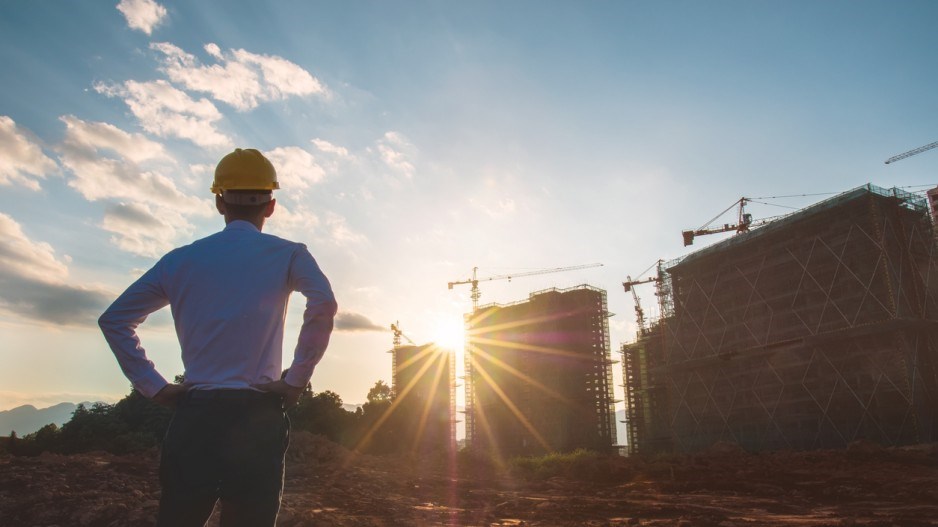Extreme weather events are becoming so common in Metro Vancouver that heat domes, atmospheric rivers, floods, mudslides, forest fires and tornados are now part of our daily lexicon.
Devastating weather events, COVID-19 restrictions, and political unrest globally, have created intricate knock-on effects on supply chains. Coupled with population growth, insatiable demand for housing and shrinking land availability, these changes have created the growing crisis of housing availability and affordability, whether rented or owned.
The complexity of this problem is straining households financially and emotionally, pushing many people out of the region, and making it harder for employers to fill positions, pressuring government institutions to do more.
In response, government and society at large have begun to reframe thinking by incorporating Environmental, Social and Governance (ESG) considerations into their planning and execution. ESG is a set of standards that shift our way of thinking about methods for making our society more resilient, our institutions more responsible, and our neighborhoods more efficient.
Companies use environmental criteria to evaluate environmental risks they might face, and how to manage them. Investors are increasingly applying these non-financial factors into their analysis of material risks and growth opportunities, but such changes come with increased costs.
A recent interview by Western Investor of Mr. Michael Yeung, Regional Vice-President, Commercial Financing at First National Financial LP, lays out some of these costs. For instance, the BC Energy Step Code introduced a five-step path to increase energy efficiency in new construction towards zero green house gas emissions. This can cost over $50,000 for a single-family home, in an industry where homes are already very expensive, which suggests demand for rental units should get stronger.
However, without governmental housing initiatives, availability of housing in the province runs the risk of lowering even further, or worse, becoming entirely unaffordable to most of the market.
Canada Housing Mortgage Corporation (CMHC) has responded to this financial challenge by reducing costs with an innovative multi-unit ‘mortgage loan insurance’ product, which focuses on affordability, accessibility, and climate compatibility, called MLI Select. It uses a point system to rate a rental housing provider’s commitment to social and environmental benefits, and responds with things like lower insurance premiums, higher loan-to-cost ratios (up to 95%), and longer amortization periods (up to 50 years), making it easier to finance rental renovations and new construction.
Unfortunately, there’s more to the housing crisis than that.
Land shortages pose another problem, and lead people to question where new homes can be built. Can under-utilized and under-occupied contaminated land factor into this? Counter-intuitively to the ‘green’ expectations of ESG, forward thinking developers are progressively accepting the risk of acquiring and building on contaminated land—and there is a lot of contaminated land.
The problem remains that lenders are reluctant to finance the purchase of contaminated land, and if they do, developers still need to overcome provincial constraints on issuance of municipal development permits until land has been thoroughly investigated and ultimately remediated.
Since brownfields are more often found in central urban locations, their existing links to transportation and other forms of infrastructure provide opportunities for development that simply cannot be found elsewhere. Redeveloping ‘brownfields’ is not limited to commercial developments; they can be redeveloped into parks and open civic spaces, community housing developments, municipal transportation, and infrastructure centers. Brownfield redevelopment projects can also act as catalysts or linchpins to create a positive environment for additional private sector investments in brownfield redevelopment.
Next Environmental has a long and proven track-record of working closely with developers, lenders and government when remediating brownfields, making them an industry leader. Examples of major clean-ups include the dramatic transformation of the long-vacant former Fullerton Lumber lands into the North Shore Auto Mall at Harbourside Business Park, developed by Concert Properties. This site was considered “technologically impossible” to remediate, prior to bringing some common sense and technological savvy to bear on the environmental hurdles which stopped ‘greening’ in its tracks for several decades. Another example was supporting remediation of B.C.’s largest shipyard for the stellar Pinnacle International development of The Pier at Lonsdale and Esplanade in North Vancouver.




